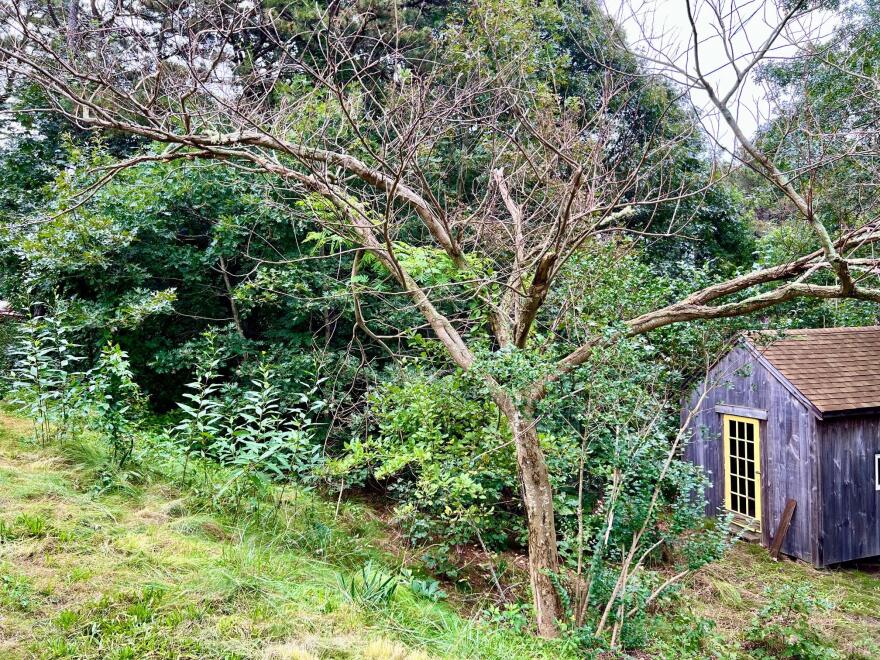Our mimosa tree is dead. Suddenly, unexpectedly, and indisputably dead. For nearly a quarter of a century its presence has been a constant fixture and an improbable joy in our yard. It was an unintentional gift bequeathed to us when we bought our house lot in 1996 from Kim and Phillippe Villard. Kim is a professional landscaper, and she kept a number of exotic plants on the property as stock, which we inherited.
When we first moved here, the mimosa tree was just a modest shrub about six feet tall. Overshadowed by the native pitch pines, it didn’t grow much for the first few years. But after I cut down several of the pines, opening up the mimosa to sunlight, the tree expanded at the astonishing rate of 1-2 feet per year, and as it did, it began to take on a strong, resilient and stunning character. Its feather-like, compound leaves responded to the slightest breeze, dancing with an iridescent glow. After a few more years, it began to put forth small, globular, white and pink blossoms, attracting crowds of bees and hummingbirds.
At some point I began to investigate the tree’s etymology. Most people know a “mimosa” as a cocktail of champagne and orange juice, and the heady effervescence of its tropical flowers suggested that as a possible origin of its name. But the actual source of “mimosa” comes from the Latin mimus, or “mime”, and reflects the leaves’ sensitivity to light and touch. Every evening, as the sun goes down, the delicate leaves of the mimosa curl up and darken through the night. Simply touching the leaves will also produce a similar reaction. Thus, the mimosa is said to “mimic,” or imitate the reactions of animals.
The tree’s presence and exuberant growth always seemed improbable. Mimosas are tropical plants, and whenever we had an unusually hard winter, I feared the tree would not survive. But it not only survived, it thrived. By last summer it had expanded horizontally, creating a thin, green and pink canopy nearly forty feet in width. We came upon a possible source of the tree’s extraordinary vitality a few years ago when we had our septic tank pumped out. We found the roots of the mimosa had wrapped themselves around the input pipe, thus providing the tree with an abundant source of water and nutrients. Subsequently, we had to cut the roots away from the pipe whenever we had our tank pumped, but I considered it a small price to pay to maintain the tree’s vigor, and it pleased me to think that we were in a mutually beneficial relationship with it.
In retrospect, I think its demise might have been foreshadowed earlier this year. A brief, but hard freeze caused the death of several trees on neighboring properties. When our tree finally leafed out in June, nearly half of its branches remained bare. I wondered then if we might lose the mimosa, but the remaining foliage flourished with such abundance that I assumed it would survive and planned to prune the dead branches in the fall. Even in August, when we left for a three-week vacation in Vermont, the resurgent growth and blossoms had nearly covered up the dead branches. Given its long history of resilience and vitality, I assumed it would recover.
So we were shocked – and that is not too strong a word – when we returned just before Labor Day and found the tree completely bare. Not a leaf, not a blossom, not a seed pod remained on the tree. It was dead, irrefutably, permanently dead. Deceased. Passed on. Departed. Defunct. Dead as a Monty Python parrot. Dead.







